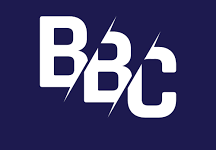eVTOL Aircraft Market
The future of urban transportation is taking flight, quite literally. The electric Vertical Take-Off and Landing (eVTOL) aircraft market, a realm once confined to science fiction, is rapidly becoming a tangible reality. With a valuation of USD 0.7 billion in 2022 and a projected surge to USD 4.46 billion by 2030, this burgeoning industry is poised for a revolution, exhibiting a staggering compound annual growth rate (CAGR) of 30.30% during the forecast period (2023-2030). This remarkable expansion signals a paradigm shift in how we envision urban mobility, promising to alleviate congestion and reshape our cities.
The drivers propelling this extraordinary growth are multifaceted, reflecting a convergence of technological advancements, environmental consciousness, and evolving societal needs. At the heart of this transformation lies the relentless pursuit of sustainable transportation solutions. As cities grapple with escalating pollution and traffic congestion, the allure of electric-powered, emission-free aircraft becomes increasingly compelling. eVTOLs offer a tantalizing prospect: swift, efficient, and environmentally friendly urban air mobility.
Technological Advancements Fueling the Ascent
The rapid evolution of battery technology, electric propulsion systems, and autonomous flight capabilities is pivotal to the eVTOL market’s ascendance. Advancements in battery energy density and charging infrastructure are enabling longer flight ranges and faster turnaround times, addressing critical concerns about operational feasibility. Similarly, the development of sophisticated electric motors and control systems is enhancing the performance and safety of these aircraft.
Furthermore, the integration of advanced sensors, artificial intelligence, and machine learning algorithms is paving the way for autonomous or semi-autonomous flight operations. This technological leap not only enhances safety but also reduces operational costs, making eVTOLs a commercially viable alternative to traditional transportation modes.
Addressing Urban Mobility Challenges
The promise of eVTOLs extends beyond mere technological innovation; it addresses pressing urban mobility challenges. Traffic congestion, a perennial bane of modern cities, exacts a heavy toll on productivity, economy, and quality of life. eVTOLs offer a compelling solution by bypassing ground-based traffic, enabling swift and efficient transportation within urban environments.
Moreover, the potential for eVTOLs to connect underserved communities and remote areas is immense. These aircraft can provide rapid access to essential services, such as healthcare and emergency response, in regions where ground transportation is limited or inefficient.
Market Dynamics and Emerging Applications
The eVTOL market is characterized by a diverse range of applications, spanning passenger transport, cargo delivery, and emergency services. Urban air mobility (UAM) is emerging as a key segment, with numerous companies developing eVTOL aircraft for on-demand air taxi services. These services promise to revolutionize urban commuting, offering a faster and more convenient alternative to traditional taxis and ride-sharing services.
Beyond passenger transport, eVTOLs are finding applications in cargo delivery, particularly in e-commerce and logistics. Their ability to access remote and congested areas makes them ideal for time-sensitive deliveries. Furthermore, eVTOLs are proving invaluable in emergency services, facilitating rapid response to medical emergencies, natural disasters, and search and rescue operations.
Navigating the Regulatory Landscape and Public Acceptance
While the eVTOL market is brimming with potential, several challenges remain. Regulatory frameworks for eVTOL operations are still evolving, and standardization is crucial for ensuring safety and interoperability. Public acceptance is another critical factor. Addressing concerns about noise pollution, safety, and privacy is essential for gaining widespread public trust.
Collaboration between industry stakeholders, regulatory bodies, and communities is vital for navigating these challenges and fostering a sustainable eVTOL ecosystem. As the industry matures, addressing these concerns will be vital to unlock the full potential of eVTOLs.
Looking Ahead: A Future of Urban Air Mobility
The eVTOL aircraft market is poised for exponential growth, driven by technological advancements, environmental consciousness, and the pressing need for sustainable urban mobility solutions. As battery technology improves, autonomous capabilities advance, and regulatory frameworks solidify, eVTOLs are set to transform urban transportation.
While challenges remain, the potential benefits of eVTOLs – reduced congestion, lower emissions, and enhanced connectivity – are undeniable. The sky is no longer the limit; it’s the beginning of a new era in urban air mobility. As we look towards the future, eVTOLs are set to redefine how we navigate our cities, ushering in a new era of efficient, sustainable, and accessible transportation.

